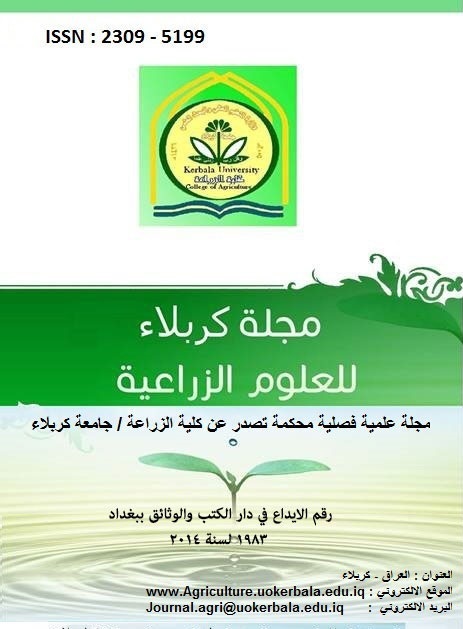Deduction of certain selection indices for carcass traits improvement depend on some body scales in ـJapanese quail
DOI:
https://doi.org/10.59658/jkas.v4i4.304Keywords:
Multiple Regression, Non-Liner Regression, Body traits, Characteristics of carcasses, QuailAbstract
This study was carried out at the Poultry Research Station for Agricultural Research of the Livestock Section / Public Authority. This was used in the experiment 28/5/2013 of the data of 66 birds carcasses of Japanese Quail Selected according to body measurements. The study aimed to correlate a number of selection index that can be used in genetic improvement programs through the relationship of nonlinear regression and multiple regression, for the characteristics of the carcasses(weight of the carcass, and the weight of the chest and thigh segments and their proportions) based on a number of a live measurements of the Japanese quail at 49/days To be with (Weight of body and the length ,width and depth of chest ).Result showed higher R-square values for weight traits (weight of the carcass, and the weight of the chest and thigh) compared with proportions traits, which reflects values that show fewer differences between the real values and predicted values of the carcass when it used as selection index, while the body measurements were the most important factor for the chest function, which is the result of breast yield (chest). The transaction is important and considered in the selection programs to improve., As well as a number of mathematical equations that can be considered as a means of measuring the carcass content and hence the possibility of using them as selection index to characterize the birds in the selection programs aimed at improving the characteristics of the carcass.
Downloads
Published
How to Cite
Issue
Section
License
Copyright (c) 2017 Copyright (c) 2024 is the Author's article. Published by the Journal of Kerbala for Agricultural Sciences under a CC BY 4.0 license

This work is licensed under a Creative Commons Attribution 4.0 International License.
Licensing Terms
All articles are published under a Creative Commons License and will be directed to the Creative Commons Attribution 4.0 International License (CC BY 4.0) That permits use, distribution, and reproduction in any medium, provided the original work is properly cited. This license also allows the work to be used for commercial purposes.
Use by both non-commercial and commercial users
This content is licensed under a Creative Commons Attribution 4.0 International (CC BY 4.0) license, permitting use by both non-commercial and commercial users. Individual users may access, download, copy, display, and redistribute the articles to colleagues, as well as adapt, translate, and text- and data-mine the content, subject to the following conditions:
- The author's moral rights, including the right of attribution and the right to protect their work from derogatory treatment, are respected.
- Where content in the article is identified as belonging to a third party, users must ensure that any reuse complies with the copyright policies of the owner of that content.
- If the article content is reused for research or educational purposes, users should maintain a link to the appropriate bibliographic citation, including the DOI and a link to the published version on the journal's website.

